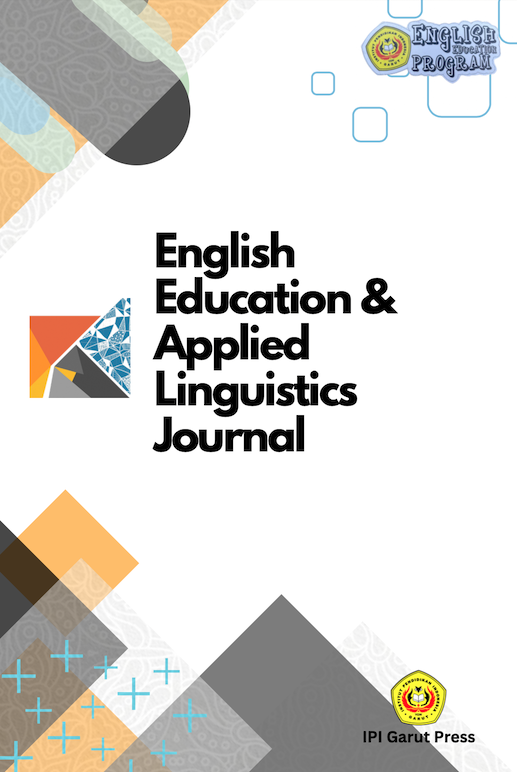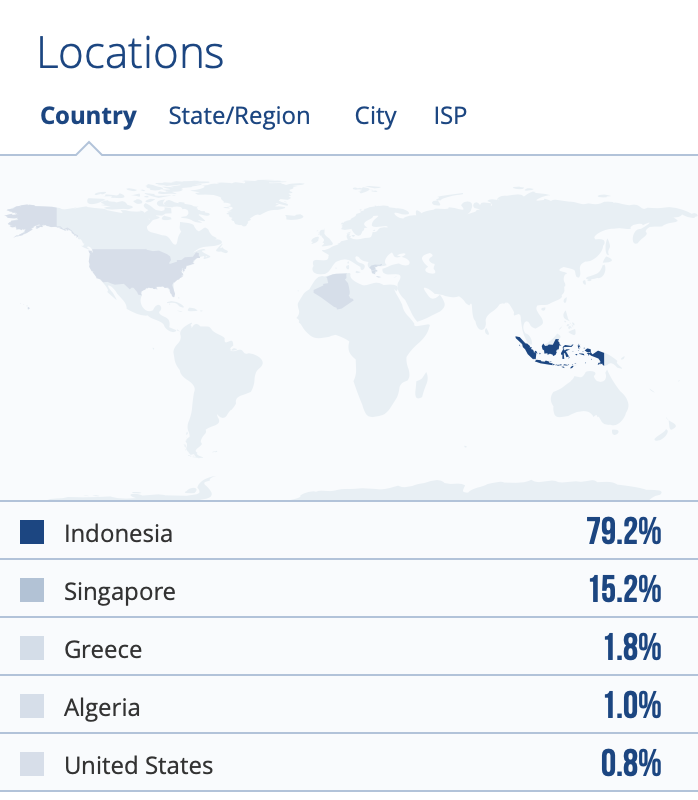The Talking Stick's Impact: A Study on Improving Second- Graders' English Speaking Skills
DOI:
https://doi.org/10.31980/eealjournal.v8i2.2668Keywords:
Speaking skill, talking stick method, Junior High School Students, EFL Language LearningAbstract
This study investigated the effectiveness of the Talking Stick method in improving the speaking skills of students at SMP N 2 Padang, addressing common issues like low proficiency, anxiety, and poor communication. Using a quantitative pre-experimental design, a single group of 32 students from class VIII.1 received a pre-test and a post-test. The results showed a significant improvement, with the average score increasing from 48.59 on the pre-test to 75 on the post-test. Statistical analysis confirmed this finding, as the calculated t-test value of 23.893 was significantly greater than the t-table value of 2.042, leading to the rejection of the null hypothesis (H0) and the acceptance of the alternative hypothesis (Ha). The significance of these findings lies in their ability to provide empirical evidence that the Talking Stick method is a highly effective, data-backed tool for enhancing student speaking skills. This research offers a practical, actionable solution for teachers facing similar challenges in their classrooms and contributes to the existing body of literature by validating the method's effectiveness in a specific, localized context.
References
Brown, H. D., & Lee, H. (2015). Teaching by principles: An interactive approach to language pedagogy. Pearson Education.
Brown, H., & Yule, G. (1983). Teaching the spoken language. Cambridge University Press. Chaney, A. L. (1998). Teaching oral communication in grades K-8. Allyn and Bacon.
Creswell, J. W. (2014).Research design: Qualitative, quantitative, and mixed methods
approaches. SAGE Publications.
Garrett, K. (2014). Talking stick activities: How to get your group to talk, listen, and connect. CreateSpace Independent Publishing Platform.
Hamdani, N. F., & Rambe, R. N. (2022). Pengaruh model pembelajaran talking stick dalam meningkatkan keterampilan berbicara siswa. Journal Improvement: Jurnal Ilmiah untuk Peningkatan Mutu Penddikan, 9.
Helman, L. (2009). Effective strategies for teaching vocabulary. Pearson Education.
Horwitz, E. K., Horwitz, M. B., & Cope, J. A. (1986). Foreign language classroom anxiety. The Modern Language Journal, 70(2), 125-132.
Kagan, S. (2009). Kagan Cooperative Learning. Kagan Publishing.
Locust, C. (2010). Talking Stick: A native American approach to communication. Native American Services.
Mulyatiningsih, E. (2016). Pendidikan karakter dan kompetensi abad 21. PT. Grasindo. Puspitasari, F. M., & Anggraeni, A. P. (2020). The effectiveness of talking stick method in teaching speaking skill. Journal of English Language Teaching, 9(1), 12-21.
Qasypia, A. (2020).Exploring students’ speaking skills at tertiary level. Gadjah Mada University Press.
Rahayu, S. (2015). The use of Talking Stick method to improve students’ speaking skill. Journal of English Language and Literature, 4(2), 154-168.
Rahayu, S. (2021). The Effect of Talking Stick Method on Students' Speaking Anxiety. English Language Teaching Journal, 10(1), 74-85.
Rahmayanti, E., Marzulina, L., & Vianty, M. (2017). The effect of Talking Stick method on students’ speaking skill at SMPN 1 Lempuing. Journal of English Language Teaching and Learning, 3(1), 1-10.
Richards, J. C., & Renandya, W. A. (Eds.). (2002). Methodology in language teaching: An anthology of current practice. Cambridge University Press.
Richards, J. C. (2008). Teaching listening and speaking: From theory to practice. Cambridge University Press.
Schmitt, N. (2008). Vocabulary in Language Teaching. Cambridge University Press.
Setiawan, E., Nurhayati, I., & Susanti, R. (2019). The use of talking stick method in teaching speaking skill at junior high school. Journal of English Language Teaching, 8(1), 1-10. Setiyadi, A. B. (2016). The analysis of students' speaking difficulties in learning English. Journal of English and Education, 4(1), 10-21.
Sholihah, M. (2016). Communicative approach in teaching speaking. IAIN Walisongo Press. Sugiyono, P. D. (2012). Metode Penelitian Kuantitatif, Kualitatif dan R&D. Alfabeta.
Tarigan, H. G. (2015). Berbicara sebagai suatu keterampilan berbahasa. Angkasa.
Wiguna, I. (2018). The effect of talking stick method on students' speaking ability. Journal of English Language Teaching, 7(1), 1-10.
Downloads
Published
How to Cite
Issue
Section
License
Copyright (c) 2025 English Education and Applied Linguistics Journal (EEAL Journal)

This work is licensed under a Creative Commons Attribution-NonCommercial-ShareAlike 4.0 International License.






